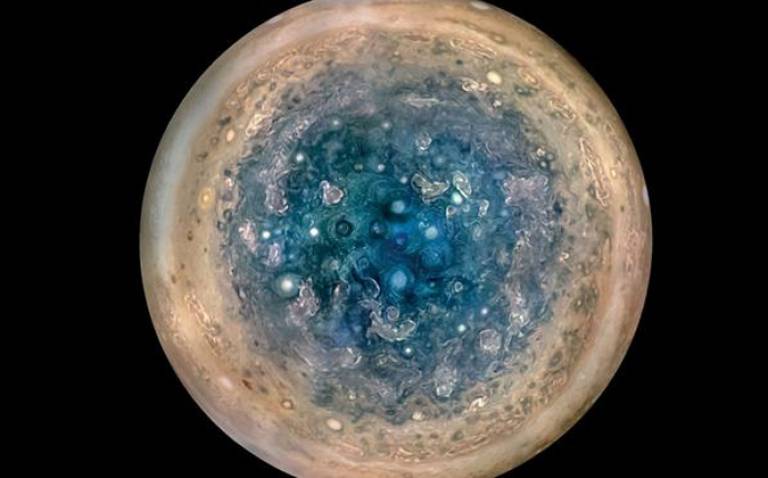Probing the Cusps of Saturn's Magnetic Field
10 October 2017
Data from the Cassini spacecraft show that the cusp regions of Saturn’s magnetic field—where it connects to the Sun’s magnetic field—have similarities to Earth’s and also intriguing differences.

Some of the most hotly debated regions of Earth’s magnetic field are its cusps, located high above the Arctic and Antarctic on the sunlit side of the planet. These regions are where Earth’s magnetic field links up with the Sun’s, in an explosive process called magnetic reconnection. The newly linked field lines form “flux tubes” that arc inward toward the poles, and the energy released from this process flicks charged particles zipping down them toward the poles. Thus, the cusps act as a portal for energetic particles in the solar wind, allowing them to penetrate Earth’s magnetic field.
For decades, scientists have flown satellites through the cusp regions to study this process in detail at Earth. One of the defining characteristics is that the influx of dense plasma, including hot helium ions streaming off the Sun, pushes in on the planet’s magnetic field, depressing it toward the planet. Spacecraft can detect these events by a fall in magnetic pressure accompanied by a rise in plasma pressure, as well as higher densities of helium.
Recently, scientists have been able to study this process at Saturn, but the results are a bit different than at Earth. Jasinski et al. used observations from NASA’s Cassini spacecraft, which crashed into Saturn last month. Going back to data from 2007 to 2013, the team analyzed eight passes that the spacecraft made through the ringed planet’s cusps, tracking the changes in magnetic pressure and plasma pressure.
They found some broad similarities to Earth’s cusps: Whenever the magnetic pressure decreased, the plasma pressure increased, indicating that the plasma was pressing inward against the magnetic field. In addition, the stronger and faster the solar wind was, the bigger the indentation it made on Saturn’s magnetic field was.
Unlike at Earth, the magnetic depression wasn’t placed exactly in the center of the cusp; instead, it appears closer in to Saturn, butting up against particles trapped within the planet’s magnetic field. In fact, the plasma encountered by Cassini in that region isn’t just from the solar wind: Compositional analysis indicates that solar wind plasma mixes with plasma already present in Saturn’s magnetic field, which originates from the icy moon Enceladus.
Furthermore, although Cassini detected ionized helium in most of its passes through the cusp, there was no correlation between the amount of it and the depth of the magnetic depressions, as you would expect if the helium were part of the inflowing solar wind. Instead, it seems these helium ions are already there, trapped in Saturn’s magnetic field. This means that there must be some other way for helium to penetrate Saturn’s magnetic field besides reconnection at the cusp—an open question for future study.
 Close
Close

